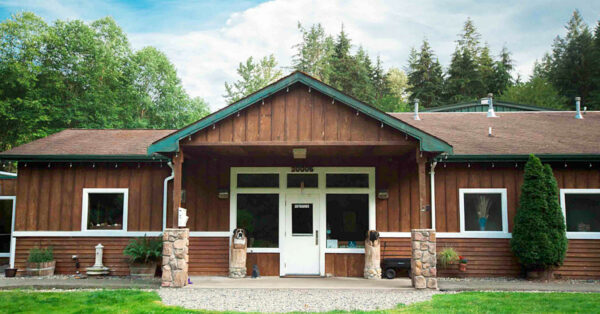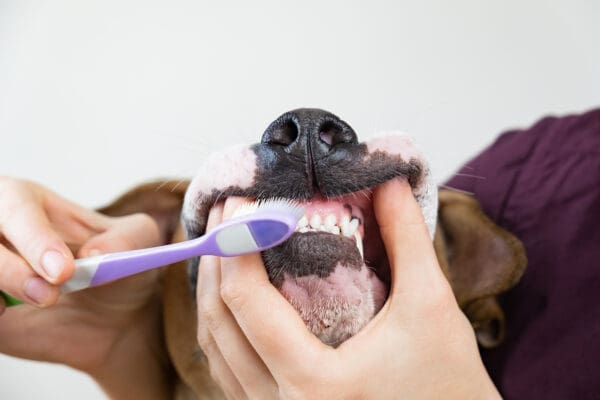
What Is A Senior Dog?
The term “senior” truly depends on the individual animal, as there are many different breeds and sizes of dogs. Although there is no formal definition, some veterinarians refer to “senior” or “geriatric” as the last 25% of an animal’s lifespan. For large and giant breeds that’s close to 7-10 years of age, while for small breeds, the last 25% of a lifespan could be between 14-18 years of age. One way to determine if your dog is becoming a senior is to look for physical signs of aging. Does your dog have gray or white hair around the muzzle? Does your dog seem less playful or have trouble seeing or hearing? These are just a few questions that may indicate advancing age in your dog. The following tips, provided by Michigan State University College of Veterinary Medicine, will be helpful in determining if your dog is approaching his senior years.
Water
No matter how old your pet is, water is the most important nutrient for a long and healthy life. It should always be available in a clean bowl and served fresh daily.
Energy
As some dogs get older, their activity level decreases, which means they need to eat fewer calories. If your dog is fed ad lib, switch to meal feeding twice daily to monitor his/her appetite and food and water intake. Most pet food manufacturers have developed diets for senior dogs. In many cases, these diets are not much different from a regular adult maintenance diet. It is important to discuss this with your veterinarian when deciding which diet to feed your dog, and when to switch.
Fat
As some dogs age they have an increase in percentage of body fat due to an increasing inability to metabolize it. Carrying too much weight can be hard on your dog’s joints, heart and lungs, and may prevent them from moving, jumping or climbing upstairs. Use a Body Condition Score chart to assess your dog’s physical condition. Slightly decreasing the fat in your dog’s diet and adding regular exercise to your dog’s daily routine, even by a few minutes, will be helpful.
Protein
As your pet gets older, his/her muscle mass decreases, so it is important for the diet to provide adequate protein. Signs of inadequate protein are loss of muscle mass, poor hair coat, or thin skin.
Senior pets should be fed diets with high quality protein to replenish any losses.
The physical signs of aging are easy for most pet owners to notice: gray or white hair on the muzzle or around the eyes, slowing down and trouble seeing or hearing. While many dogs do show some signs of aging, not all will age at the same rate. That is why there is no standardized definition of a “senior” dog. The term “senior” is a marketing term, rather than a nutritional term, because the exact nutrient needs of older dogs are not fully known.
Body Condition Score (5-point scale)
1. Thin Dog
Ribs, spine and hip bones easily seen; fat not easily felt, and bones of the skeleton are prominent.
2. Underweight Dog
Minimal fat covering ribs; waistline easily noted when viewed from above; abdomen tucked up when viewed from side.
3. Ideal Body Condition
Ribs are felt but not seen; waist is observed when viewed from above; abdomen is tucked up when viewed from side.
4. Overweight Dog
Ribs felt with some fat covering; waistline thickened when viewed from above; fat may be felt at the base of tail or over hips.
5. Obese Dog
Ribs not easily felt under thick fat covering; waistline absent; fat may also cover spine, shoulders, hips, and tail base.
Summary
- Older pets should be fed in meals so owners can carefully monitor both food and water intake.
- As pets age they may gain or lose body weight. Owners should use a Body Condition Score system to periodically determine if their older dog needs more or less food.
- Maintain a consistent routine of regular activity with your pet to minimize the risk of obesity.
- Visit your veterinarian at least twice a year for health checkups.
Reposted from Veterinary Medical Center-College of Veterinary Medicine Michigan State University
Additional Resources
Canine and Feline Nutrition -A Resource for Companion Animal Professionals Second Edition, 2000 Mosby
Manual of Veterinary Dietetics Buffington, Holloway, Abood, 2004 Elsevier



